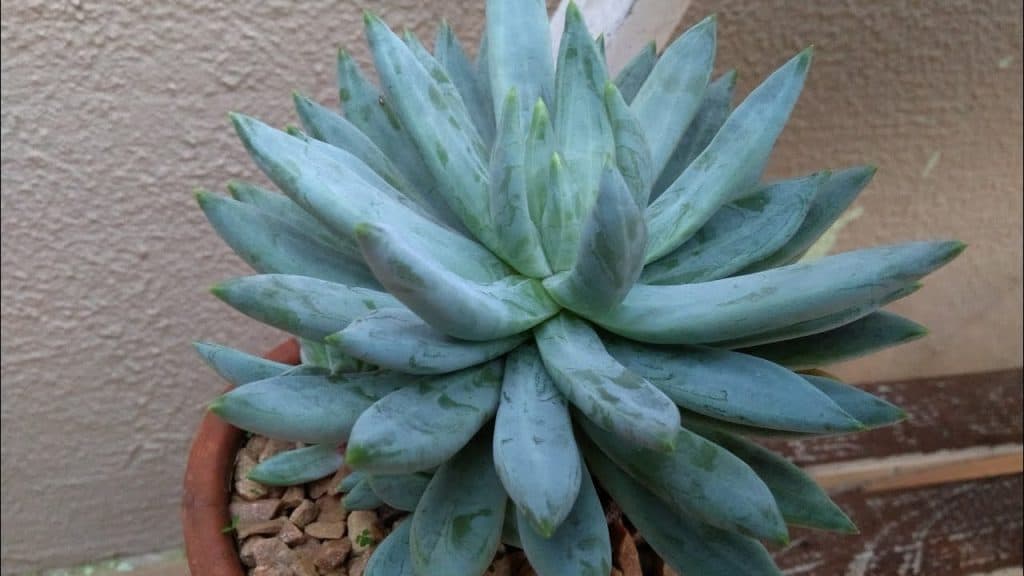Succulents are one of the most popular plants for indoor gardening due to their unique shapes, vibrant colors, and low-maintenance requirements. However, during winter, caring for succulents can be a bit challenging. The cold temperatures and reduced sunlight can take a toll on these plants, which may lead to poor growth, droopy leaves, and even death in some scenarios but we’re gonna guide you on how you can take care of your succulents during winter.
How To Care For Succulents Indoors During Winter
1. Control The Temperature
The first step towards caring for your succulent plants during winter is to control the temperature since succulents thrive in warm, dry environments, it’s important to keep them in a room with a temperature between 60 and 75 degrees Fahrenheit. Avoid placing succulents near cold windows, drafts, or heaters as this can cause stress to the plant and ultimately lead to death. If your home gets too cold, consider investing in a small space heater to keep the temperature steady.
2. Lightning Source
It is a common scenario that during the winter months, natural sunlight can be limited, so it’s important to ensure your succulents are getting enough light. Place them near a south-facing window where they can receive at least six hours of direct sunlight per day. If natural light is scarce, consider using a grow light to supplement the light they receive.
3. Proper Watering
One of the biggest mistakes people make when caring for succulents in winter is overwatering. In winter, succulents require less water than in the warmer months. Watering once a week is usually sufficient, but ensure that the soil is completely dry before watering again. Succulents prefer well-draining soil, so make sure the pot has adequate drainage holes to prevent water from sitting in the soil, which can lead to root rot.
4. Humidity Control
Indoor environments can be dry during the winter months, which can cause succulents to lose moisture and become dehydrated. Consider using a humidifier in the room where your succulents are located to add moisture to the air. Alternatively, you can place a tray of water near your plants to create a humid microclimate around them.
5. Fertilizer
During winter, succulent plants slow down its growth hence they require little or no fertilizer. However, during spring and summer which is its growing season you can apply a balanced, water-soluble fertilizer to help it grow properly.
6. Pest Pest Control
Indoor succulents are less prone to pests than outdoor plants, but they can still be affected by spider mites, mealybugs, and scale insects. Hence it is best to inspect your succulents regularly for signs of pests, such as white cotton-like spots on the leaves or stems. If you notice any pests, remove them with a cotton swab dipped in rubbing alcohol or neem oil.
7. Repotting To Bigger Pot
Since succulents grow slowly, they don’t require frequent repotting. However, if your plant has outgrown its current pot or the soil is depleted, it becomes vital to repot. If you want to repot your succulent plant, use a well-draining soil mix specifically formulated for succulents and choose a pot that’s only slightly larger than the current one.
8. Pruning
Succulents don’t require much pruning, but you can remove dead or yellow leaves with clean, sharp scissors. Pruning can also be used to shape your succulent into a desired form. Be sure to sterilize your scissors before use to prevent the spread of disease.
9. Maintain Steady Airflow
It is important to ventilate indoors where you keep your succulent plant to help dry up the potting mix fast, which would invariably prevent rot and pest infestation. All you have to do is to open the windows to let the wind in or you can use a fan to supply air to your plants. Better still, you can also combine both measures for enhanced results.
Conclusion
Caring for succulents indoors during the winter months requires a few adjustments to their environment and care routine. With proper temperature, lighting, watering, humidity, fertilizer, pest management, repotting, and pruning, you can keep your succulents healthy and beautiful all year round.





